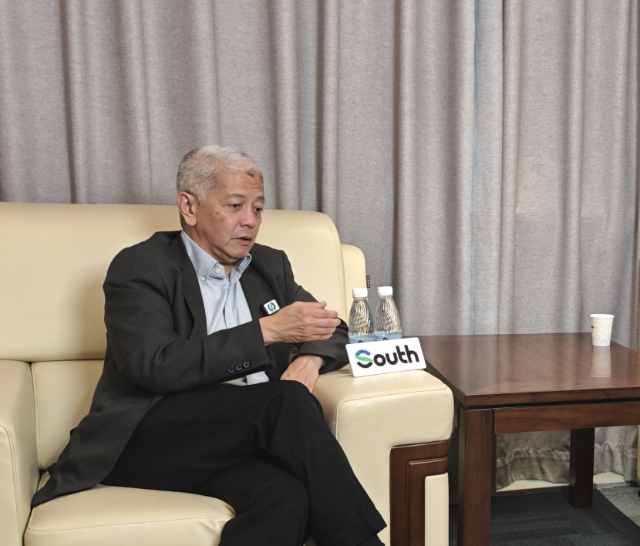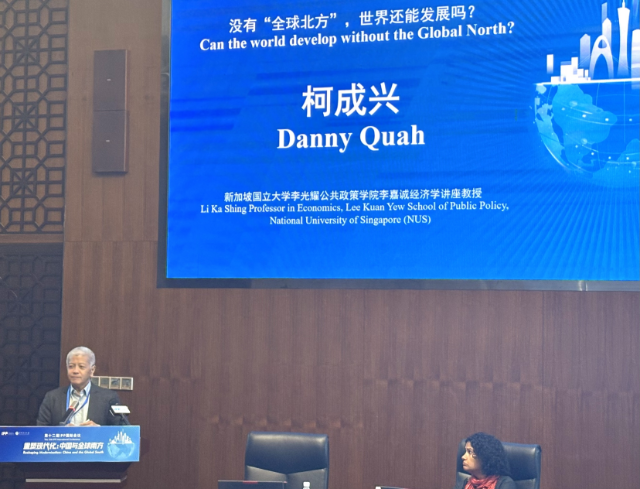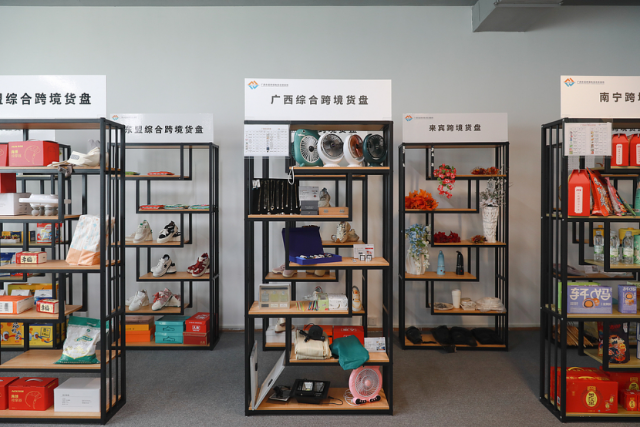"If America is weakened, and the rest of the world in the East continues to grow strongly, the world center of gravity will be pulled even more towards us... That prediction will likely be true, even faster than 2050, possibly as early as 2040."
The projection came during a recent exclusive interview with Danny Quah, Professor of Economics at the Lee Kuan Yew School of Public Policy at the National University of Singapore.

Danny Quah receives the exclusive interview with South in Guangzhou on August 23, 2025.
As the originator of the theory of the global economy's shifting center of gravity, derived from his prestigious paper published in 2011, Quah believes that, if anything, the world's economic center of gravity will lie in the GMT+8 time zone, as "history has turned out the way it has."
The US, as he observes, has reached a point where it no longer believes in many factors that contributed to its great economic wealth and power, such as science and knowledge, the strength of the university system, and international trade.
Quah bluntly stated that the US is implementing many economic policies that will weaken it under Trump's administration. China, despite its previous double-digit growth, is currently growing at roughly 5% each year, which contributes significantly to global GDP. Additionally, India is currently the world's fastest-growing large economy.

Danny Quah delivers a speech at the Institute of Public Policy at the South China University of Technology in Guangzhou on August 23, 2025.
The Global South countries, which escaped colonialism and external rules five decades ago, possess the greatest incentive for development this time. Every country needs to be respected, along with its history. Quah sought to illustrate how these different histories can facilitate collaboration among countries.
From the perspective of ASEAN countries, he detailed ASEAN's economy in the eastward trend as well as the areas of collaboration between ASEAN and the Guangdong-Hong Kong-Macao Greater Bay Area (GBA).
ASEAN countries, with a population of approximately 700 million, continue to believe in the system of open trade and international exchange. He acknowledged that America's disruption of the international economic system harms ASEAN countries based on WTO rules, not just due to raised tariffs, but also because of the waning validity of the global trading system.

Chinese products are displayed on China-ASEAN cross-border e-commerce pallets in Nanning, Guangxi, on June 12, 2025. (Photo: CFP)
The GBA, in contrast, allows these pockets of trade to continue thriving and prospering, serving multiple purposes, according to Quah. He expressed that ASEAN is very eager to see how Southeast Asia can continue to drive these opportunities for prosperity together. He identified two areas for further collaboration: digital and green.
He informed the South that ASEAN is very interested in better markets for energy, particularly green energy, as well as AI and semiconductor technologies. The number one export of Singapore and Malaysia is electronic components and semiconductors, as they are all part of the global supply chain.
ASEAN does not feel that it has to be involved in just one area currently, Quah noted. "It does not see that being involved in one means that it can't join the others," he added.
The group is promoting regional trade agreements such as the Regional Comprehensive Economic Partnership and is very engaged in the Comprehensive and Progressive Agreement for Trans-Pacific Partnership.
In this context, Quah emphasized that BRICS, as the epitome of the Global South, would be another organization where ASEAN, along with China and other BRICS+ countries, can collaborate.
Countries operate on the principles of mutual benefit, providing a platform where the Global South, comprising 85% of humanity, can have a bigger say in their own destiny.
Reporter: Zhang Ruijun
Video: Guo Hongda
Script: Zhang Ruijun
Poster & Photo: Guo Hongda
Editor: Yuan Zixiang, James Campion, Shen He
Wang Yating (intern) also contributed to the article.
















